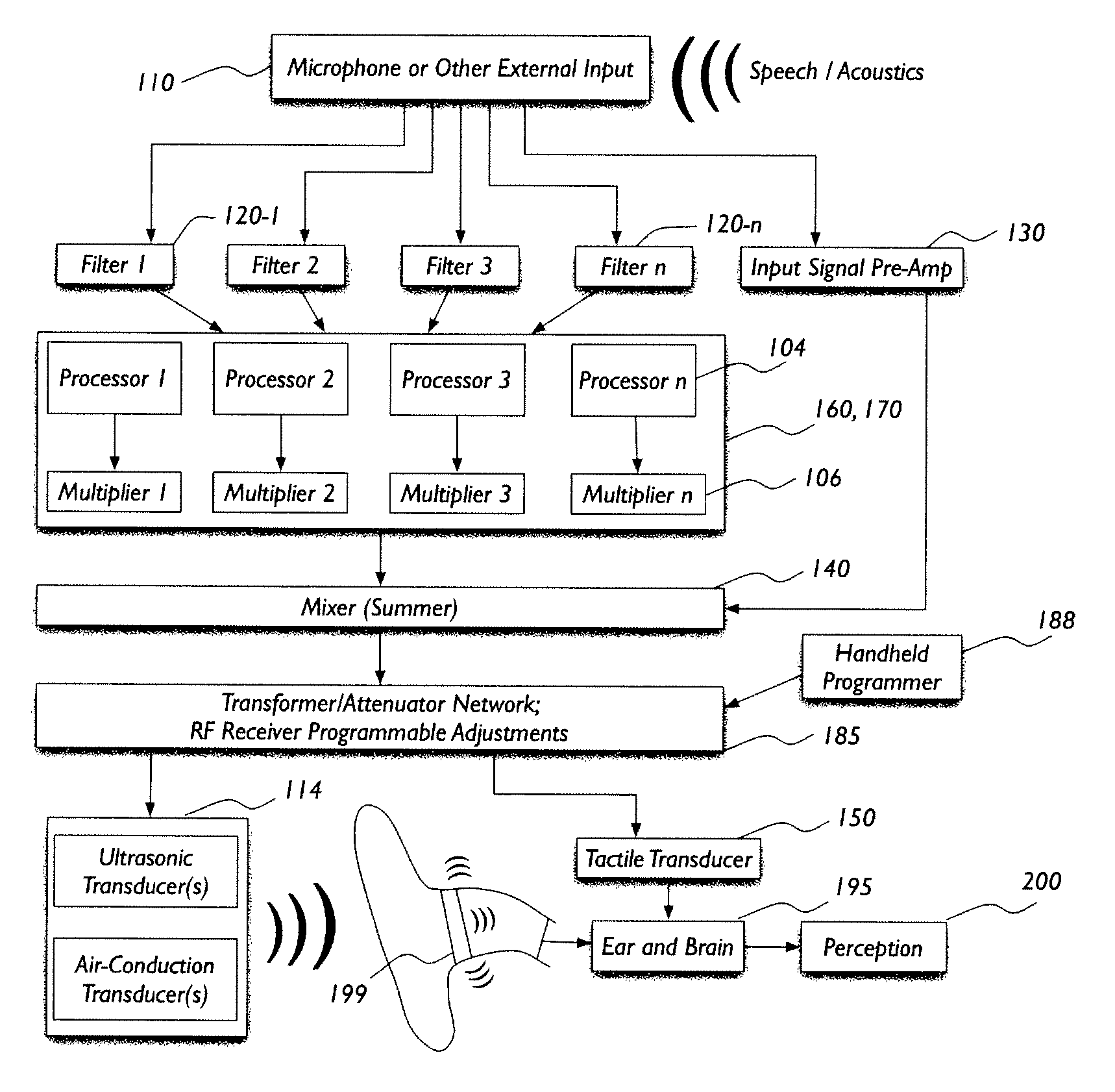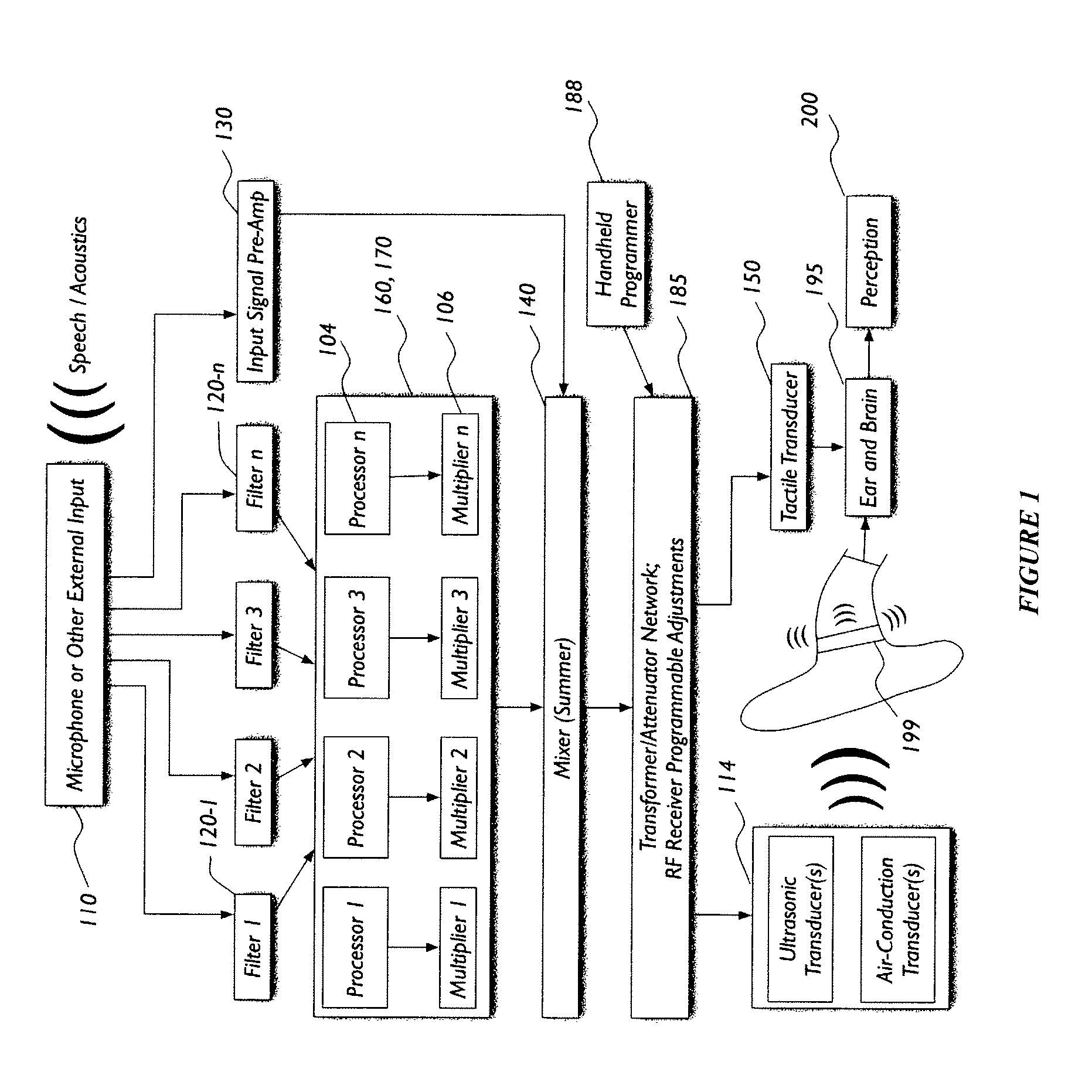Ultrasonic and multimodality assisted hearing
- Summary
- Abstract
- Description
- Claims
- Application Information
AI Technical Summary
Benefits of technology
Problems solved by technology
Method used
Image
Examples
example 1
Ultrasonic Assisted Music Perception
[0047]In one or more embodiments of the present invention, a user is allowed to select a frequency range wherein the user's auditory function is diminished. For example, a user may select the frequency ranges which correlate predominantly with non-vocal and non-speech sounds. It is commonly understood that speech signals are generally in the frequency range of about 500 to about 8200 Hertz, wherein the range from about 2000 to about 8200 Hertz comprises labial and fricative sounds, which give presence to speech. The device may modulate signals within the “speech range” of frequencies because signals corresponding to non-vocalizations may be present in this range. The algorithms and processing are adapted for non-speech signals and need not be constrained to any particular frequency range. A novel and inventive feature of the present invention is the modulation of processed music or other non-vocal patterns on an ultrasonic carrier. The carrier wav...
example 2
Noise Reduction in Speech
[0058]Speech can be manipulated in a number of ways and surprisingly its intelligibility remains intact despite manipulation. These embodiments of the invention will “pre-process” speech by algorithms that will favor the type of neural mechanisms in the brain evolved to decode amplitude modulated (“AM”) signals.
[0059]In one preferred embodiment of the present invention, a speech, message, or other sound source such as the input from a microphone, that of an electronically prerecorded signal such as, but not limited to, a compact disc or MP3 player, or any other auditory signal is relayed to, after processing, to a transducer array. This is shown diagrammatically in FIG. 1 in which the source 110 is eventually relayed to a transducer array 114 and other transducers 150.
[0060]Before the signal is relayed to the transducer array, it is processed. For example, a first filtering system may be used to preprocess the speech signal in order to optimize the signal fo...
PUM
 Login to View More
Login to View More Abstract
Description
Claims
Application Information
 Login to View More
Login to View More - R&D
- Intellectual Property
- Life Sciences
- Materials
- Tech Scout
- Unparalleled Data Quality
- Higher Quality Content
- 60% Fewer Hallucinations
Browse by: Latest US Patents, China's latest patents, Technical Efficacy Thesaurus, Application Domain, Technology Topic, Popular Technical Reports.
© 2025 PatSnap. All rights reserved.Legal|Privacy policy|Modern Slavery Act Transparency Statement|Sitemap|About US| Contact US: help@patsnap.com


